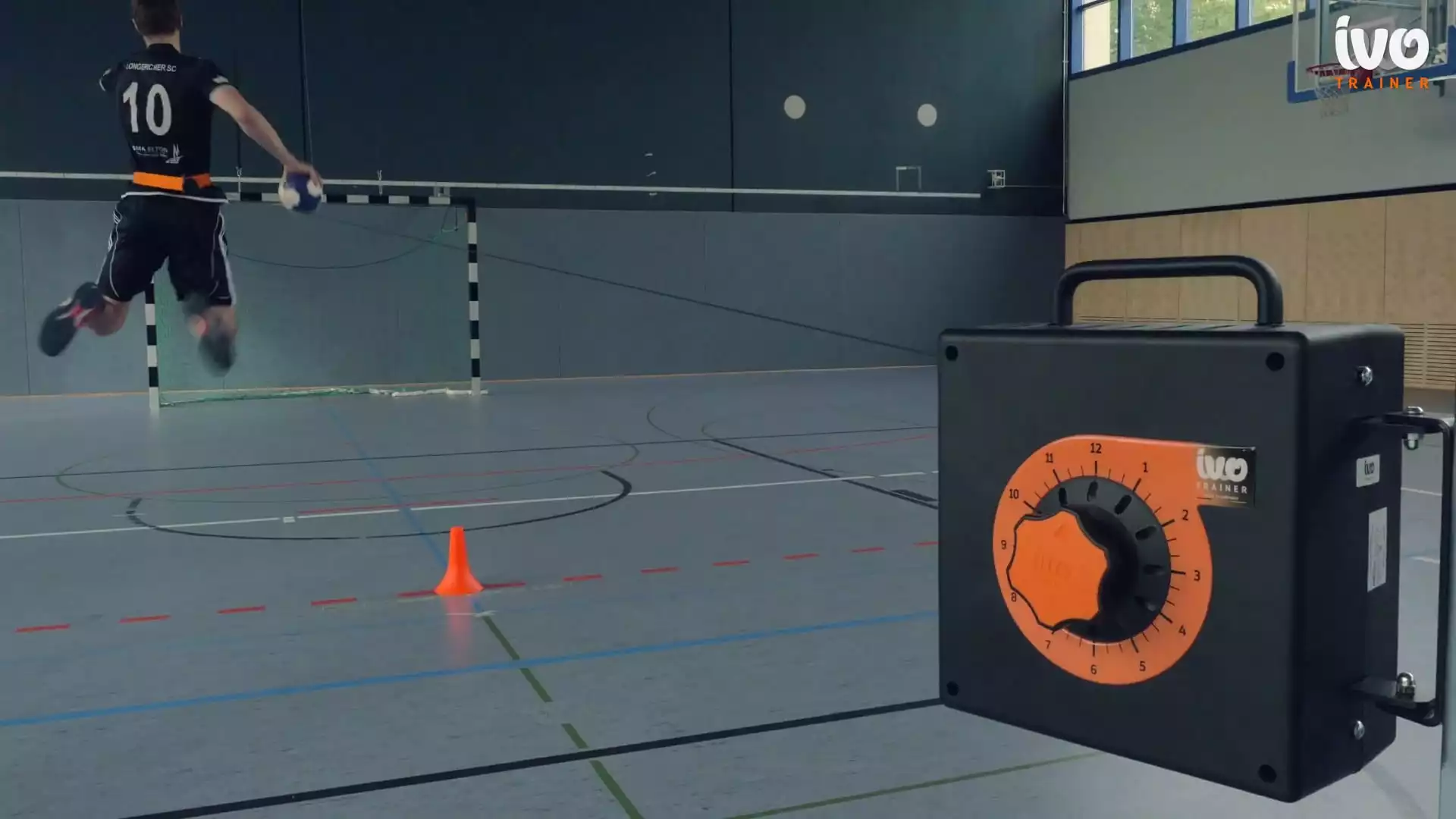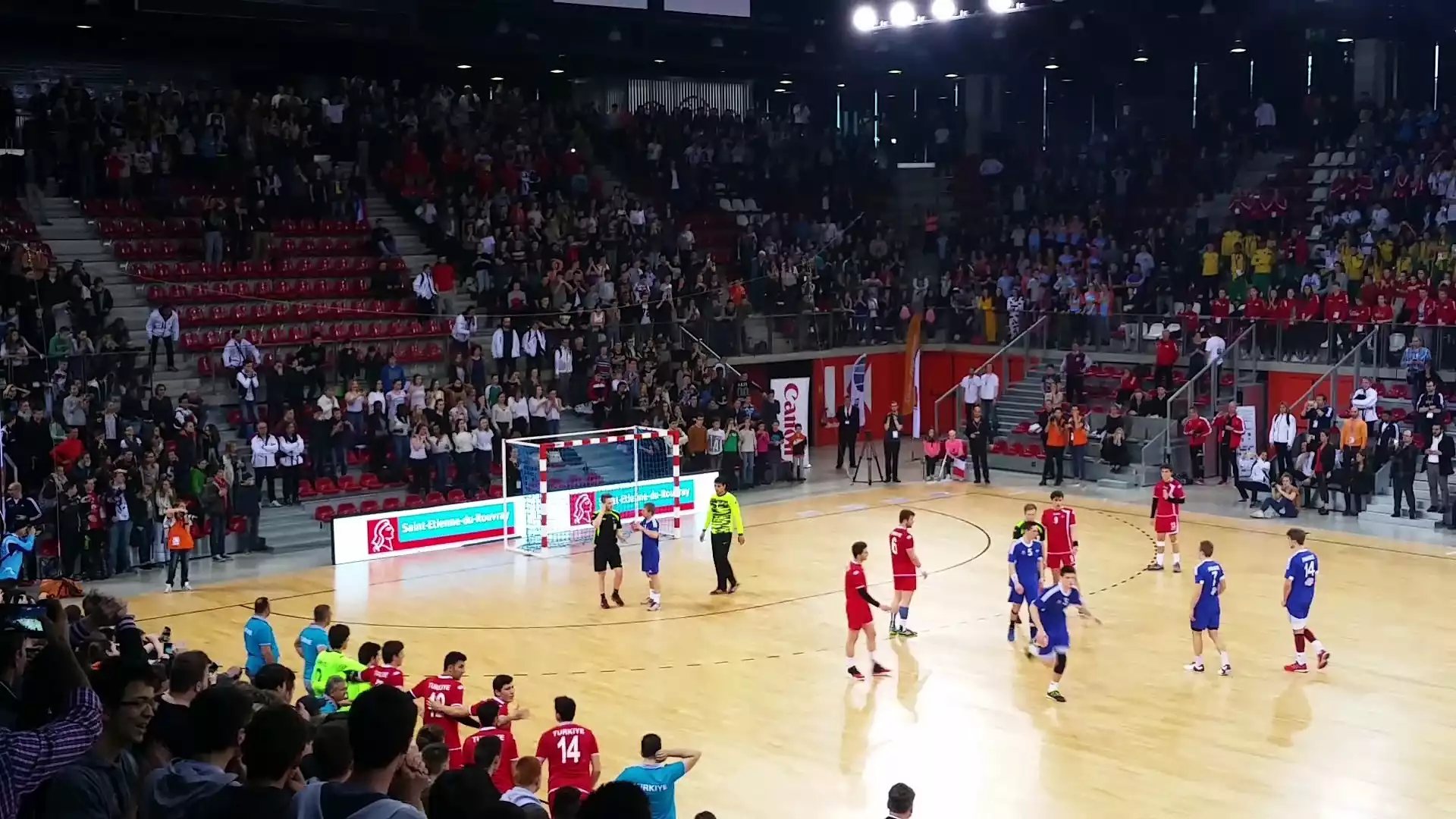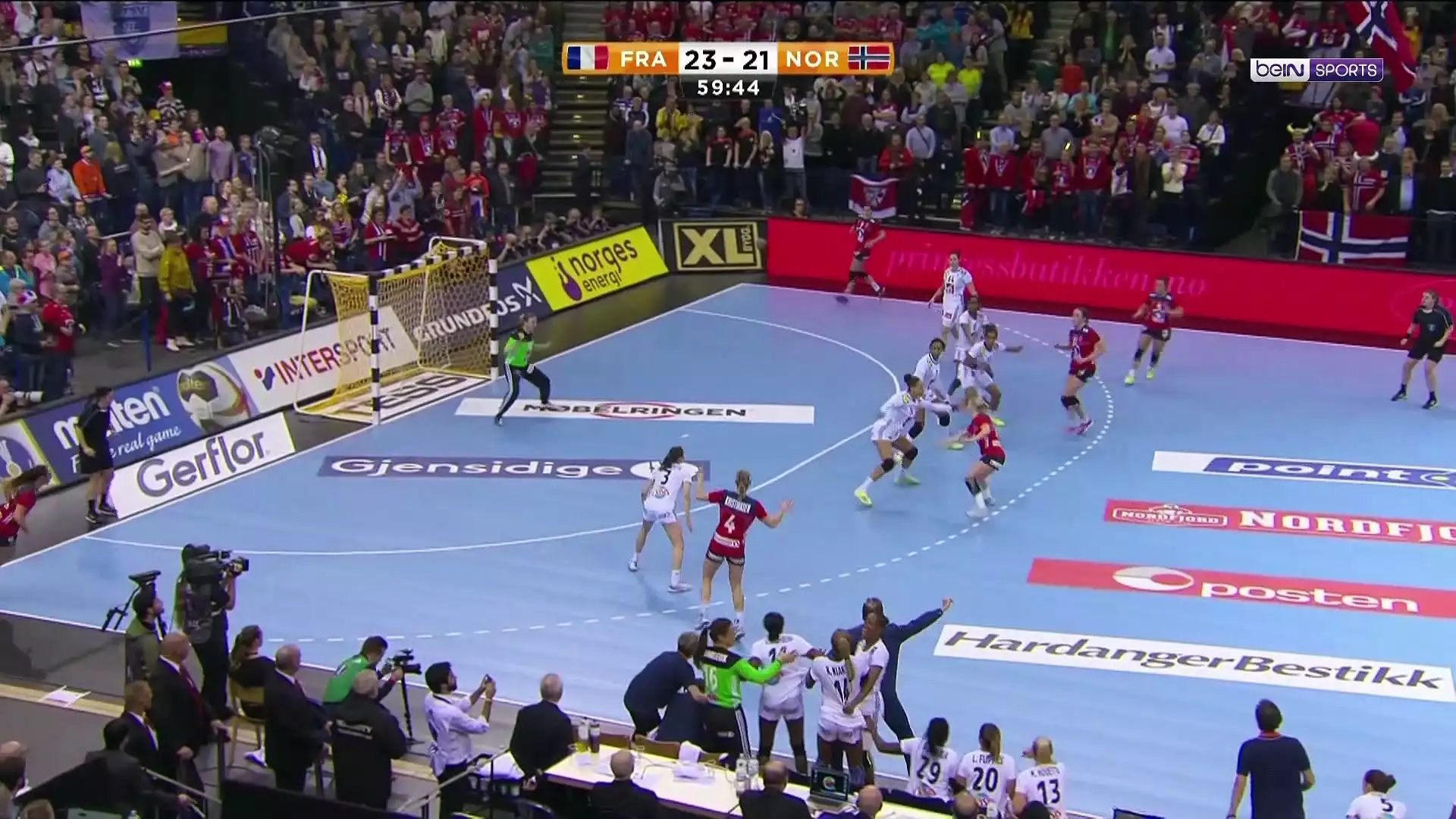Importance of Physical Conditioning for Handball Players
Physical conditioning is crucial for handball players as it enhances their overall performance on the court. Handball is a fast-paced sport that requires players to be agile, explosive, and have excellent endurance. Without proper physical conditioning, players are more prone to injuries and may struggle to keep up with the demands of the game.
One of the key benefits of physical conditioning for handball players is improved strength. Strength training exercises help build muscle mass and increase power, allowing players to perform tasks such as throwing, blocking, and tackling more effectively. Additionally, a well-conditioned body can withstand the physical demands of the game, reducing the risk of injuries.
Another important aspect of physical conditioning is endurance. Handball matches can be intense and can last for extended periods. Endurance training helps improve cardiovascular fitness, allowing players to maintain a high level of performance throughout the game. It also helps in faster recovery during breaks, ensuring players are ready to give their best in each play.
Lastly, physical conditioning enhances agility and speed. Handball players need to be able to change direction quickly, accelerate rapidly, and be agile on their feet. Agility and speed training drills play a crucial role in developing these skills, enabling players to react quickly to game situations and outmaneuver their opponents.
Basic Training Principles for Handball Players
Before diving into specific training techniques, it's important to understand the basic principles of training for handball players. These principles will help you optimize your workouts and ensure you are making progress towards your goals.
First and foremost, goal-setting is essential. Set specific and measurable goals that align with your overall handball performance objectives. Whether it's improving your throwing accuracy or increasing your vertical jump, having clear goals will help you stay motivated and track your progress.
Next, prioritize progressive overload. This principle involves gradually increasing the intensity, duration, or frequency of your workouts over time. It ensures that your body continues to adapt and improve, preventing plateaus in your performance.
Another important principle is specificity. Your training should mimic the movements and demands of handball as closely as possible. This means incorporating drills and exercises that replicate game situations, such as agility ladder drills, passing drills, and position-specific exercises.
Lastly, recovery and rest are crucial for optimal performance. Allow your body enough time to recover between training sessions to avoid overtraining and reduce the risk of injuries. Incorporate rest days into your schedule and prioritize quality sleep to support your body's recovery processes.
Strength Training Exercises for Handball Players
Strength training is a vital component of physical conditioning for handball players. It helps build muscle mass, increase power, and improve overall performance on the court. Here are some key strength training exercises that every handball player should incorporate into their training routine:
1. Squats: Squats are a compound exercise that targets multiple muscle groups, including the quadriceps, hamstrings, and glutes. They help improve lower body strength and explosive power, which are essential for movements like jumping and accelerating.
2. Deadlifts: Deadlifts primarily target the posterior chain, including the hamstrings, glutes, and lower back. They are excellent for developing overall strength and power, which translates to improved throwing and tackling abilities.
3. Bench Press: The bench press is a classic exercise that targets the chest, shoulders, and triceps. It helps develop upper body strength, which is essential for throwing, blocking, and maintaining a strong defensive position.
4. Pull-Ups: Pull-ups are an effective exercise for strengthening the upper back, biceps, and forearms. They improve grip strength and pulling power, which is beneficial for actions such as grabbing the ball and defending against opponents.
Remember to start with lighter weights and focus on proper form before gradually increasing the load. Aim for 3-4 sets of 8-12 repetitions for each exercise, with a focus on maintaining good technique throughout.
Endurance Training for Handball Players
Endurance is a critical component of handball performance, as matches can be physically demanding and last for extended periods. Here are some endurance training techniques that will help you improve your cardiovascular fitness and stamina:
1. Interval Training: Interval training involves alternating between high-intensity exercise and periods of active recovery. For example, you can sprint for 30 seconds and then jog for 1 minute. Repeat this cycle for a set duration or number of repetitions. Interval training improves both aerobic and anaerobic fitness, allowing you to sustain high-intensity efforts during the game.
2. Long-Distance Running: Incorporate long-distance running into your training routine to build endurance. Start with shorter distances and gradually increase the duration and intensity of your runs. Aim for a steady pace that challenges your cardiovascular system without pushing you to exhaustion.
3. Circuit Training: Circuit training combines cardiovascular exercises with strength training to provide a full-body workout. Design a circuit that includes exercises like burpees, jumping jacks, push-ups, and lunges. Perform each exercise for a set amount of time or repetitions before moving on to the next one. Circuit training improves both endurance and muscular strength.
4. Sport-Specific Drills: Incorporate drills that mimic the movements and intensity of handball into your training sessions. For example, set up a mini handball game with your teammates or practice specific game scenarios that require sustained effort. This will help you build endurance while also improving your skills.
Remember to gradually increase the duration and intensity of your endurance training sessions to avoid overexertion. Aim for 2-3 sessions per week, and allow sufficient recovery time between sessions to maximize the benefits.
Agility and Speed Training for Handball Players
Agility and speed are crucial attributes for handball players, as the game requires quick changes in direction, rapid acceleration, and fast reaction times. Here are some training techniques to improve your agility and speed on the court:
1. Agility Ladder Drills: Set up an agility ladder on the ground and perform various footwork patterns through the ladder. Focus on quick and precise movements, maintaining a low center of gravity. This drill improves foot speed, coordination, and agility.
2. Cone Drills: Set up cones in different patterns and distances, and perform drills that involve quick changes of direction. For example, run forward to a cone, side shuffle to another cone, and then backpedal to the starting point. This drill enhances agility, acceleration, and deceleration abilities.
3. Plyometric Exercises: Plyometric exercises involve explosive movements that help develop power and speed. Examples include box jumps, lateral jumps, and squat jumps. Incorporate these exercises into your training routine to improve your explosive power and speed.
4. Reaction Time Training: Handball requires quick reactions to game situations. Incorporate reaction time drills into your training, such as partner drills where you react to cues or visual stimuli. This will improve your reflexes and ability to respond quickly during the game.
Remember to warm up properly before agility and speed training to reduce the risk of injuries. Perform each drill with proper form and focus on quality over quantity. Gradually increase the intensity and complexity of the drills as your skills improve.
Flexibility and Mobility Exercises for Handball Players
Flexibility and mobility are essential for handball players as they contribute to better movement efficiency, injury prevention, and overall performance. Here are some exercises that will help improve your flexibility and mobility:
1. Dynamic Stretching: Dynamic stretching involves moving your body through a full range of motion, mimicking the movements you will perform during handball. Perform exercises like arm circles, leg swings, and lunges to warm up your muscles and improve flexibility.
2. Foam Rolling: Foam rolling is a form of self-massage that helps release muscle tension and improve mobility. Use a foam roller to target major muscle groups, such as the calves, quadriceps, and IT band. Roll slowly over each muscle, pausing on any tight or tender spots.
3. Yoga or Pilates: Incorporate yoga or Pilates into your training routine to improve flexibility, core strength, and body awareness. These practices also promote relaxation and recovery, which are essential for optimal performance.
4. Stretching Exercises: Perform static stretches after your workouts or training sessions to improve flexibility and prevent muscle tightness. Focus on major muscle groups such as the hamstrings, hip flexors, and shoulders. Hold each stretch for 20-30 seconds and repeat for 2-3 sets.
Remember to listen to your body and avoid forcing any stretches or movements beyond your comfort zone. Flexibility and mobility improvements take time, so be consistent with your exercises and gradually progress.
Injury Prevention Strategies for Handball Players
Injuries can significantly impact a handball player's performance and sideline them for extended periods. Here are some injury prevention strategies to help you stay in top shape:
1. Warm-Up and Cool-Down: Always warm up before training or playing a match to prepare your body for the demands of the game. A dynamic warm-up that includes exercises like jogging, high knees, and arm circles will increase blood flow to your muscles and improve joint mobility. Similarly, cool down with light aerobic exercises and static stretches to gradually reduce your heart rate and prevent muscle tightness.
2. Proper Technique: Focus on using proper technique and form during handball-specific movements. This includes correct body positioning, proper landing mechanics, and appropriate throwing techniques. Poor technique increases the risk of injuries, so seek guidance from a coach or trainer if needed.
3. Cross-Training: Engage in cross-training activities to strengthen muscles that are not heavily used in handball. This helps balance muscle development and reduces the risk of overuse injuries. Activities like swimming, cycling, and weightlifting can be beneficial.
4. Protective Gear: Use appropriate protective gear, such as knee pads, elbow pads, and ankle braces, to minimize the risk of impact-related injuries. Ensure that your gear fits properly and is in good condition.
5. Rest and Recovery: Allow your body enough time to rest and recover between training sessions and matches. Overtraining can lead to fatigue, decreased performance, and increased injury risk. Prioritize quality sleep, proper nutrition, and relaxation techniques to support your body's recovery processes.
Nutrition Tips for Handball Players
Proper nutrition is essential for fueling your body and optimizing your performance as a handball player. Here are some nutrition tips to support your physical conditioning:
1. Hydration: Stay hydrated before, during, and after training sessions and matches. Drink water regularly throughout the day and consider using a sports drink during intense physical activity to replenish electrolytes.
2. Balanced Diet: Consume a balanced diet that includes a variety of nutrient-dense foods. Incorporate lean proteins, whole grains, fruits, vegetables, and healthy fats into your meals. This will provide you with the necessary energy and nutrients to perform at your best.
3. Pre-Workout Nutrition: Consume a small meal or snack containing carbohydrates and protein about 1-2 hours before training or playing a match. This will provide a steady source of energy and support muscle recovery.
4. Post-Workout Nutrition: After intense training or a match, consume a meal or snack that includes carbohydrates and protein within 30-60 minutes. This helps replenish glycogen stores and supports muscle repair and growth.
5. Fueling During Matches: During long matches or intense training sessions, consider consuming easily digestible carbohydrates, such as sports drinks, energy gels, or fruits, to maintain energy levels.
6. Nutrient Timing: Distribute your meals and snacks throughout the day to provide a steady supply of nutrients and maintain energy levels. Aim for 3-4 balanced meals and 1-2 snacks that include a combination of carbohydrates, proteins, and fats.
Remember that every individual's nutritional needs may vary, so consult with a registered dietitian or sports nutritionist to develop a personalized nutrition plan that suits your specific requirements.









